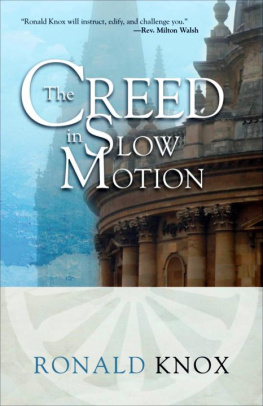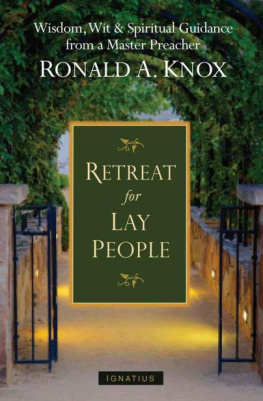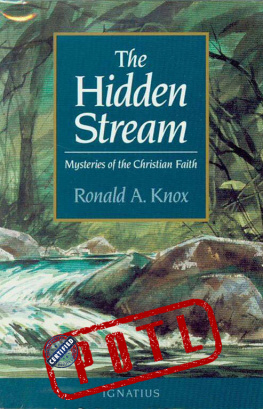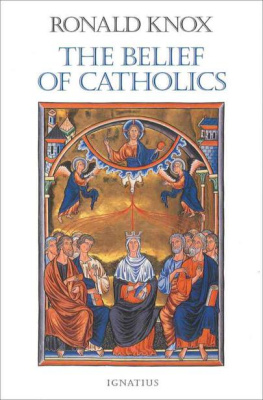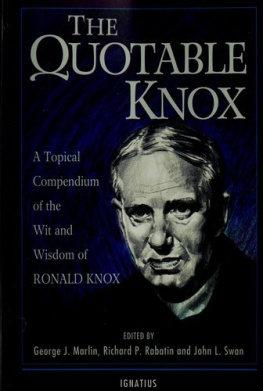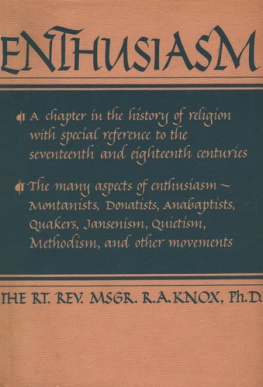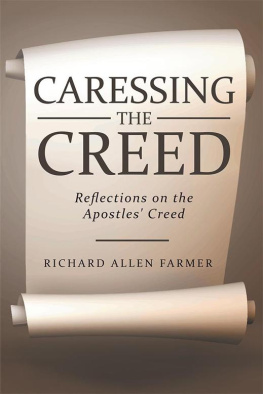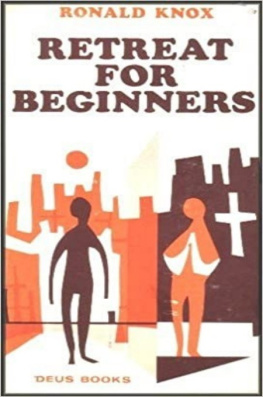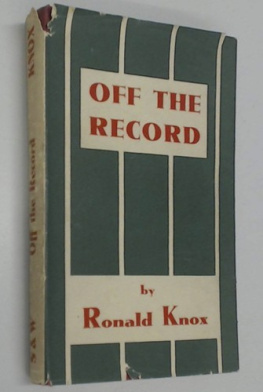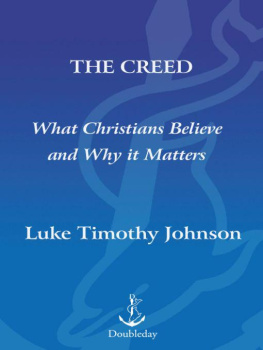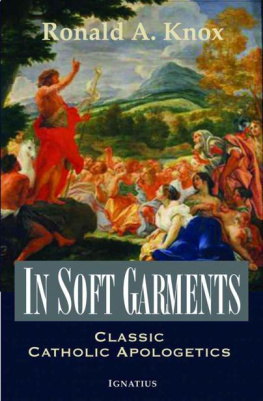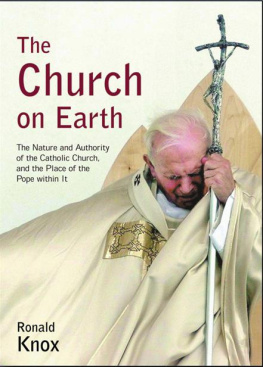Ronald Knox will instruct, edify, and challenge you.
Rev. Milton Walsh
Author of Second Friends: C.S. Lewis and Ronald Knox in Conversation
Through an odd set of circumstances, Msgr. Ronald Knox found himself chaplain to a group of high school girls during the Second World War. To these teenagers, he preached a series of sermons on the Creed, and they are a miracle of clarity, simplicity, depth, and spiritual perception. This edition will prove invaluable to anyone interested in preaching, catechesis, and apologetics. Knox's essays are a model of how to proclaim the faith boldly and intelligently.
Rev Robert Barron
Author of The Priority of Christ: Toward a Postliberal Catholicism
RONALD KNOX






And Claudia
Author's Note
The sermons of which this book is composed were delivered to the girls at the Assumption Convent (now at Exton, Rutland) when they were evacuated to Aldenham Park, Bridgnorth, during the late war.
CONTENTS
................................ xi
....................................... 10
.................................... 19
........................ 28
....................................... 37
................................................. 46
........................................................ 55
............................... 63
.................................................... 71
.................................... 80
................................................ 89
........................................... 97
...................................... 105
............................................. 113
.......................... 122
................. 139
................. 148
.................................................... 157
.................................................... 165
.................................................... 174
.................................................... 183
................... 198
........................ 207
........................ 216
...... 225
............................................................ 235
FOREWORD
IN THE SUMMER of 1939 Ronald Knox resigned his post as Chaplain to the Catholic students at Oxford and took up residence in the country home of some friends. He was seeking a place of seclusion to undertake an arduous project: a translation of the entire Vulgate Bible. As far back as 1855 the bishops of England had recognized the need for a new version of the scriptures, and had suggested the project to John Henry Newman. Nothing came of that enterprise, and nearly a century later the bishops asked Ronald Knox to produce a new translation. This was why he sought refuge in the country-he longed for a quiet, peaceful place where he could devote his energies to this task without interruptions or distractions.
Knox soon had company. At the outbreak of the Second World War, Assumption Convent in Kensington Square was evacuated to the Actons' estate at Aldenham. One can imagine Knox's consternation as he watched his scholarly sanctuary invaded by a pack of schoolgirls and all his translation apparatus crowded into one small room. For the duration of the war he lived in a community of fifty-five students, fifteen nuns, and several lay staff.
Once again Ronald Knox was a chaplain, but no longer in the familiar world of Oxford. His charges were not sophisticated college students, but children. They were also girls; Knox had not encouraged women to come around the Chaplaincy at Oxford, and they were not a flock he had been sent to tend; they were an intrusion visited upon a middle-aged scholar which threatened to distract him from his assigned task of translating the Bible.
What promised to be a most uncomfortable situation turned out to be one of the greatest blessings of Father Knox's life. He found the girls very easy to get along with-their youthfulness allowed their affection to overcome their awe. He established abiding friendships with several of them, and in the years following the war was often called upon to preside or preach at their weddings. Furthermore, they helped Ronald Knox overcome his orientation toward the past and to recognize his stake in the present and in the future.
The girls also presented an opportunity for Knox to present the Catholic faith to a new audience, young people. Many of these conferences were published after the war as The Creed in Slow Motion, The Mass in Slow Motion, and The Gospel in Slow Motion, and proved to be among Knox's most popular books. The organization and arguments employed are similar to his Oxford conferences, but pitched now in a different key. The Slow Motion talks are of great interest not only for their clarity of thought, but also for their disarming familiarity. They show Knox at his most imaginative and playful. The same man who could write a pastiche of Dryden or capture the flavor of English spoken in Common Rooms over the span of three centuries was able to present the Catholic faith in the language and images familiar to a schoolgirl.
Adolescents are a particularly challenging audience. An unskilled teacher can lose young minds by abstraction, or alienate young hearts by condescension. Inhabiting as they do the limbo between childhood and maturity, it is all too easy for instructors either to talk down to teenagers, or to overestimate what they know. (And of course many teenagers think they already know everything!) In his conferences on the Creed, Ronald Knox demonstrates great skill as a teacher. He is willing to take on challenging questions, and pays his listeners the compliment of believing they want to engage those questions with intellectual rigor. He is also very frank in facing the dilemmas that do not admit of easy solutions, and of conveying to his audience something of the wisdom of Newman: "A thousand difficulties do not constitute a doubt." Wilfred Sheed described Knox's writing in the Slow Motion books as "simplicityin-depth"; simple, yes, but not superficial-in reflecting on what we believe, Knox does not skate over the difficult points.

